Home> Company News> How To Set Up A 2-Pump Hydraulic Setup
- AddressTianqiao, Beiyuan District, Jinan,Shandong
- Worktime9:00-18:00(Beijing time)
- Phone(Working Time)0531-8299 9953
Hydraulic systems are used in various industries and applications where power is needed to perform work. A 2-pump hydraulic setup is a type of hydraulic system that offers many benefits, including increased efficiency and better performance. In this article, we will discuss what a 2-pump hydraulic setup is and why it is important.
A 2-pump hydraulic setup is a hydraulic system that uses two pumps to power the system. The first pump is responsible for low-pressure, high-volume tasks, while the second pump is used for high-pressure, low-volume tasks. By using two pumps, the system can run more efficiently and effectively.
One of the key benefits of a 2-pump hydraulic setup is its increased efficiency. By using two pumps, the system can run at maximum capacity without overloading a single pump. This helps to reduce energy consumption and operating costs. Additionally, the system can operate more smoothly and with better performance, providing increased power and faster cycle times.
Another benefit of a 2-pump hydraulic setup is its versatility. The system can be used for various applications, including construction equipment, material handling, and agricultural machinery. It can also be customized to meet specific needs and requirements.
In conclusion, a 2-pump hydraulic setup is an important system for many industries and applications. Its benefits include increased efficiency, better performance, and versatility. By understanding what a 2-pump hydraulic setup is and its importance, users can make informed decisions about implementing this system in their operations.
Understanding a 2-Pump Hydraulic Setup
A 2-pump hydraulic setup is a hydraulic system that uses two pumps to generate fluid pressure and power. It is commonly used in industrial and heavy-duty applications, where a single hydraulic pump may not provide enough power or speed to complete the required tasks efficiently. In a 2-pump hydraulic setup, one pump is used to generate high pressure, while the other pump is used to generate low pressure. The two pumps work in conjunction to provide the necessary power to the hydraulic system.
The benefits of having a 2-pump hydraulic system are numerous. First, it allows for increased efficiency and better performance in hydraulic systems. By using two pumps instead of one, the system can generate more power and pressure, resulting in faster and more efficient operation. Additionally, a 2-pump hydraulic system can help reduce energy consumption and improve the overall operating efficiency of the system. This is especially important in applications where power consumption is a concern. Overall, a 2-pump hydraulic system can help increase productivity and reduce operating costs, making it a valuable investment for many businesses and industries.

Choosing the Right Equipment
When it comes to selecting equipment for a 2-pump hydraulic system, it is essential to consider several factors to ensure optimal performance and longevity.
Firstly, the type of pumps used should be carefully chosen based on the specific needs of the hydraulic system. Factors to consider include the required flow rate, pressure rating, and power source. Selecting a pump with a higher flow rate can help to increase the system's efficiency, while choosing one with a lower flow rate can help to reduce energy consumption.
Next, it is important to choose the right valves for the hydraulic system. The valves play a crucial role in controlling the flow of hydraulic fluid and regulating the pressure in the system. Some common types of valves used in a 2-pump hydraulic system include relief valves, directional control valves, and check valves. Choosing high-quality valves that are compatible with the pumps and hoses in the system can help to ensure reliable performance.
In addition to pumps and valves, choosing the right hoses for the hydraulic system is also crucial. Hoses should be carefully selected based on the required pressure rating, temperature range, and compatibility with the hydraulic fluid used. High-quality hoses can help to reduce the risk of leaks and other issues.
When selecting equipment for a 2-pump hydraulic system, it is also important to consider the durability and quality of the components. Choosing equipment from reputable manufacturers can help to ensure that the system performs reliably and lasts for a long time. Finally, it is important to select equipment that is appropriate for the intended application and use, to ensure that the system is optimized for the required workload.
Installation Process
Installing a 2-pump hydraulic system can be a complex process, but following the correct steps will ensure that the system is installed properly and functions efficiently. Here is a step-by-step guide to installing a 2-pump hydraulic setup:
-
Prepare the work area: Clear the area where the hydraulic system will be installed. Ensure that there is enough space for the pumps, valves, hoses, and cylinders, and that the area is free from debris or any other obstruction.
-
Install the pumps: Install the pumps at a suitable location, preferably close to the hydraulic system. The pumps should be mounted on a stable base and connected to the power source. The power source can be a diesel or electric motor, depending on the application.
-
Install the valves: Install the control valves and connect them to the pumps using hoses. The valves will control the flow of oil between the two pumps and the hydraulic cylinders.
-
Install the cylinders: Install the hydraulic cylinders at the desired location. Connect them to the control valves using hoses. The cylinders will be responsible for converting the hydraulic pressure into mechanical force.
-
Install the hoses: Connect the hoses from the pumps to the control valves and then to the cylinders. Use high-quality hoses that are rated for the pressure and flow of the system. Ensure that the hoses are properly secured to prevent any leaks.
-
Install the reservoir: Install the hydraulic reservoir, which will hold the hydraulic fluid used by the system. The reservoir should be placed at a higher level than the pumps to ensure that the fluid flows freely into the pumps.
-
Fill the reservoir: Fill the hydraulic reservoir with the recommended type and amount of hydraulic fluid. Check the manufacturer's specifications for the correct fluid and amount.
-
Test the system: Test the system by running it at low pressure and checking for any leaks or malfunctions. If everything is working correctly, gradually increase the pressure to the desired level.
It is important to follow all safety precautions during the installation process. This includes wearing appropriate personal protective equipment, such as gloves and safety glasses, and ensuring that the power source is disconnected before working on the system.
Proper installation is crucial for the efficient operation of a 2-pump hydraulic system. If you are not confident in your ability to install the system yourself, it is recommended to seek the assistance of a professional hydraulic technician.
Maintenance and Troubleshooting
Proper maintenance is essential for ensuring the longevity and optimal performance of a 2-pump hydraulic setup. Regular maintenance can prevent costly repairs and downtime. Here are some tips for maintaining a 2-pump hydraulic system:
-
Check and maintain fluid levels: Check the hydraulic fluid levels regularly and top up when necessary. Also, inspect the fluid for any signs of contamination, such as dirt or debris. If the fluid is dirty, change it immediately.
-
Inspect hoses and fittings: Check all hoses and fittings for any signs of wear and tear, leaks, or damage. Replace any damaged parts immediately.
-
Lubricate moving parts: Apply lubrication to all moving parts, such as valves and cylinders, to prevent friction and wear.
-
Check the filters: Check all filters, such as the hydraulic and suction filters, and replace them when necessary.
-
Test the system: Periodically test the system to ensure it is functioning properly. Check for any unusual noises, leaks, or other issues. If you notice any problems, address them immediately.
In addition to regular maintenance, it is also important to know how to troubleshoot common issues that may arise with a 2-pump hydraulic setup. Some common problems include:
-
Low hydraulic pressure: If the hydraulic pressure is low, check the fluid levels and filters. Also, check for any leaks or damaged hoses that could be causing a loss of pressure.
-
Slow or jerky movement: If the hydraulic system is slow or jerky, check the hydraulic fluid levels and filters. Also, check for any air in the system, which can cause slow or erratic movement.
-
Overheating: If the system is overheating, check the fluid levels and filters. Also, check for any obstructions in the hoses or valves that could be causing the system to work harder than necessary.
By following proper maintenance procedures and knowing how to troubleshoot common issues, you can ensure that your 2-pump hydraulic setup performs optimally and lasts for a long time.
Advantages and Limitations of a 2-Pump Hydraulic Setup
A 2-pump hydraulic system offers many advantages over a single-pump system. By having two separate pumps, one pump can be dedicated to high-pressure tasks while the other can be used for low-pressure tasks. This allows for greater efficiency and better performance.
One of the main advantages of a 2-pump hydraulic system is increased power and performance. The two pumps working together can deliver more power to the system than a single pump, allowing for faster and more efficient operation. This is particularly useful in heavy-duty applications where a lot of power is needed.
Another advantage is reduced energy consumption. Because the pumps can be dedicated to specific tasks, the system can operate at lower pressure when possible, which reduces energy consumption and operating costs.
Faster cycle times are also possible with a 2-pump hydraulic setup. Because the pumps can work together to deliver more power, the system can operate faster, allowing for more work to be done in less time.
However, there are some limitations to a 2-pump hydraulic setup. One limitation is the complexity of installation. Because there are more components involved, the installation process can be more complicated and time-consuming. This can also make the system more difficult to troubleshoot and maintain.
Another limitation is the higher cost. A 2-pump hydraulic system requires more equipment and components than a single-pump system, which can make it more expensive to install and maintain.
Overall, a 2-pump hydraulic system offers many advantages and can be a great investment for those in need of a high-performance hydraulic system. However, it is important to weigh the advantages and limitations before deciding if it is the right choice for a particular application.

The 2-pump hydraulic setup is a system that allows for increased efficiency and better performance in hydraulic applications. In this article, we have discussed the basic concept of a 2-pump hydraulic system, its components, installation process, maintenance requirements, and advantages and limitations.
A 2-pump hydraulic system consists of two hydraulic pumps that work together to provide increased power and performance. One pump is dedicated to the high-pressure circuit, while the other is dedicated to the low-pressure circuit. The pumps are connected through a manifold, which allows for easy switching between circuits.
To choose the right equipment for a 2-pump hydraulic setup, it is important to consider factors such as the type of pumps, valves, and hoses. High-quality and durable equipment should be selected for the best results.
During installation, it is important to follow the step-by-step process carefully, starting from preparing the work area to testing the system. Safety measures should also be followed to prevent accidents and injuries.
Proper maintenance is essential for the longevity and optimal performance of a 2-pump hydraulic setup. Regular inspection, cleaning, and lubrication of components are necessary. Common issues that may arise with the system include leaks, component wear, and pressure drop. These issues can be addressed through troubleshooting procedures.
The advantages of a 2-pump hydraulic setup include increased power and performance, reduced energy consumption, and faster cycle times. However, the system's complexity of installation and higher cost are among its limitations.
In conclusion, a 2-pump hydraulic setup offers many benefits for hydraulic applications. To maximize these benefits, it is important to follow proper installation, maintenance, and troubleshooting procedures. With the right equipment and careful attention to detail, a 2-pump hydraulic system can provide reliable and efficient performance for various hydraulic needs.


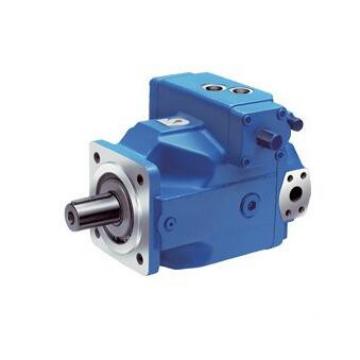 USA VICKERS Pump PVH131R13AF30B252000002001AB010A
USA VICKERS Pump PVH131R13AF30B252000002001AB010A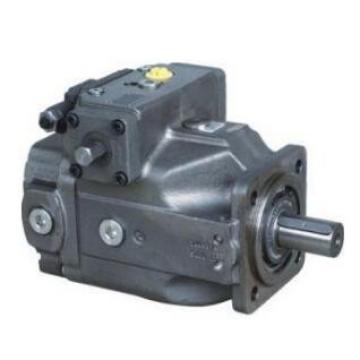 Parker Piston Pump 400481002108 PV140R1K1B4NWLZ+PGP517A0
Parker Piston Pump 400481002108 PV140R1K1B4NWLZ+PGP517A0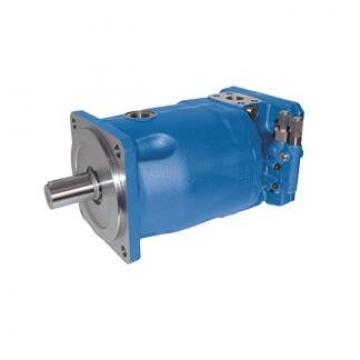 Parker Piston Pump 400481003286 PV180R1K1A4NYCD+PGP511A0
Parker Piston Pump 400481003286 PV180R1K1A4NYCD+PGP511A0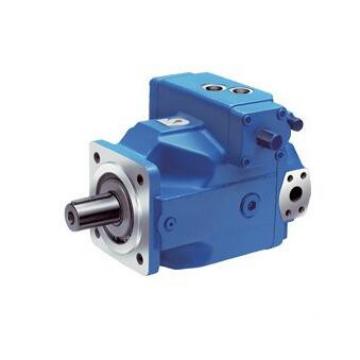 USA VICKERS Pump PVH057R02AA10B25200000100100010A
USA VICKERS Pump PVH057R02AA10B25200000100100010A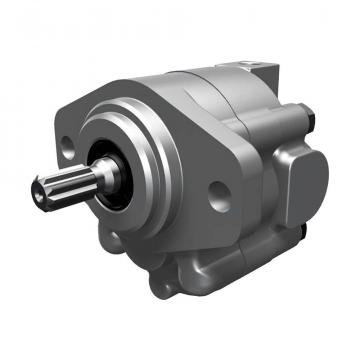 Parker Piston Pump 400481004166 PV270R9K1B4NYLZK0033+PVA
Parker Piston Pump 400481004166 PV270R9K1B4NYLZK0033+PVA